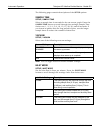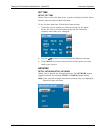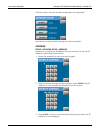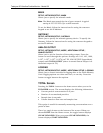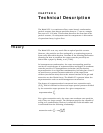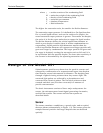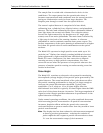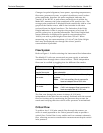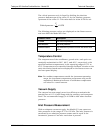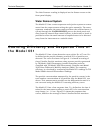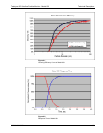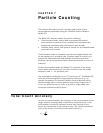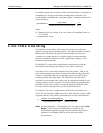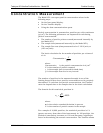
Technical Description Teledyne API Ultrafine Particle Monitor - Model 651
56 07506C DCN6727
Changes in optical alignment, laser power, operating temperatures,
flow rates, presence of water, or optical cleanliness can all reduce
pulse amplitude, therefore the pulse amplitude indicates the
“health” of the WCPC. A peak-sense and hold circuit within the
Model 651 measures the pulse amplitude of 50 particles/sec. The
average pulse amplitude is displayed both numerically and in a bar
graph on the Status screen, and is also included in the data
retrieved from the digital interfaces. The limitation of the Pulse
Height indication is that is requires the presence of at least 50
particle pulses/sec to provide information. The Pulse Height fault
status indication is displayed for particle concentrations over
1000 #/cm
3
with a pulse height of less than 350 mV. When
measuring very low concentrations (<10 #/cm
3
) the Pulse Height
fault may be displayed even though the correct particle
concentration is provided.
Flow System
Refer to Figure 1-2 while reviewing the instrument flow information.
The Model 651 relies on an external vacuum supply to maintain
constant flows through three critical orifices. These independent
flows can be verified by toggling into the different flow modes.
Orifice Description
0.12 L/min aerosol
sample flow mode
Carries the aerosol to be sampled. This is not
user-selectable.
3.0 L/min auxiliary
flow mode
Provides a higher flow rate for use with sampling
systems.
Note: 2.4 L/min auxiliary flow is removed to
leave a transport flow of 0.6 L/min.
0.6 L/min transport
flow mode
Reduces particle losses.
Note: 0.48 L/min transport flow is removed to
leave a sample flow of 0.12 L/min.
The flow rate through the sensor is always 0.12 L/min,
independent of the inlet flow rate setting. Problems with the aerosol
flow can be detected by monitoring the pressure drop across the
nozzle and verifying that the critical orifice pressure is maintained.
Critical Flow
To achieve the 0.12 L/min sample flow through the sensor, an
orifice is used (operated at the critical pressure ratio) to provide a
critical flow. Critical flow is very stable and is a constant volumetric
flow, ensuring accurate concentration measurements despite varied
inlet pressure.



